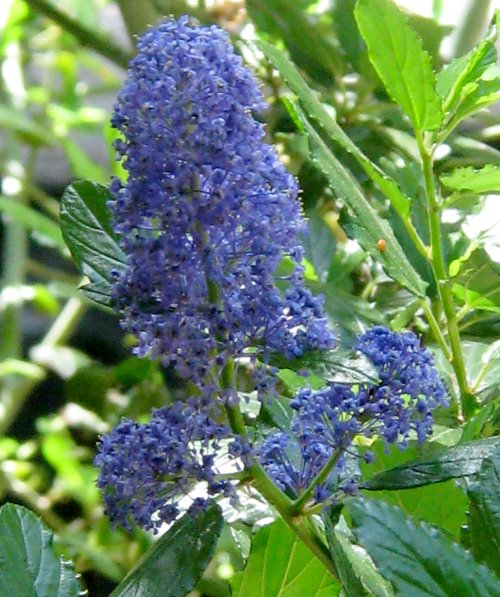
Native plants “spring” to life in early winter during the winter rains, with flowering periods starting at that time and running throughout spring. As things heat up in the summer, some of the local natives, those that are not evergreen, go dormant, which some people consider a disadvantage.
In one sense, this opposition to natives may simply be a matter of personal taste. There are also people for whom the whole process of dormancy can look beautiful. For example, the leaves of the Black Sage (Saliva melifera) begin to brown in June after the plant has finished flowering. Some of the leaves fall off right away, others remain for different lengths of time. This leads to beautiful contrasts between the ones that are still dark green on the top sides, the bottom sides of others that are light green, and those leaves that are turning different shades of brown.
There are also ways in which opposition to dormancy may be more than simply a matter of taste. On a conceptual level, it is strange that so many people are unfamiliar with the idea of summer dormancy, even people who were born and grew up in California. To me, this fact demonstrates the extent to which imported horticultural standards dominate or condition our expectations of what a garden should be, and even of what nature should be. What seems even stranger to me is that in the East the concept of dormancy is accepted, and even appreciated during the winter. However, this tolerance for dormancy was not imported alongside the Eastern lawn-based traditions.
Whatever the cause, we seem to have learned to expect plants and lawns to behave as if we lived in New Hampshire, or Georgia, or as if we were in the tropics and San Diego were a Hawaiian island and not a desert climate. Whatever the causes, to fulfill these expectations and ideals we certainly water the heck out of our yards throughout the summer to attain them.
I suspect that underlying the adoption of these foreign horticultural standards is the sentiment that seasons just get in the way. People want their gardens to reflect a constancy and uniformity that defies nature. Because of the mildness of our climate it has been possible to achieve this ideal, but we are slowly coming to realize the extent of the costs of this sentiment, and that it leads to waste on a very large scale.
Besides the incredible waste of resources, I believe that the most unfortunate result of the horticultural ideal of making our gardens look the same year round is a growing disconnect between people and the nature that surrounds them. It is not hard to see how this disconnect has lead to damaging consequences for the environment.
Were we to learn to value the concept that each region should reflect its own character, there would be less problems with invasives. One step in this process is to plant a native garden. Very simply, by planting natives you decrease the number of invasives that are planted. Hopefully, helping our neighbors become familiar with natives in this way will lead them to do the same, and the use of invasives could really decline.
To me, it is a dynamic prospect that using local natives not only helps conserve resources but can also strengthen the image of San Diego as having its own identity, and that this in turn could help inspire people to preserve the natural environs that we have outside of the garden domain.
Of course, one downside of expressing individuality in this way is that planting a native garden goes against a strong current of traditional horticultural conditioning. That is, going native would seem to put one directly at odds with a blind, powerful force in the world that makes money by perpetrating and maintaining a dead-end horticultural direction.
Fortunately going native is not as scary as this sounds. All the drama one may feel associated with such a change in direction dissipates quite easily from the simple act of placing a young native plant in the earth and watching it grow. How refreshing that such a simple action can undo years of misdirection.
2 Responses
I’m with you 100%! When my wife & I lived in Salem, OR, we ripped up our entire front yard — to the utter dismay of our neighbors — then replanted solely with native plants. The neighbors came around to our way of thinking within a year or two.
We’re beginning this same process now in South Bend. Since we try to lead a nontoxic lifestyle, we don’t poison the grass to kill it, but tarp it. In a few weeks, I will pull up the tarped sections (tarps will be moved to the next section) and we will begin seeding plants native to our area. Not only will this necessitate less waste of water resources but it concurrently means less mowing!
I really, really like that last part. 🙂
Ywah, mowing is my least favorite thing, because of allergies, and husband proved to be unpleasnat when asked to do it. So that’s pretty much the only thing I pay a gardener to do. Without a lawn I could handle it all except the heavy lifting.
Just planted tomatoes today and harvested carrots, though. The veggie garden is an exception to the native plant thing. ;^)